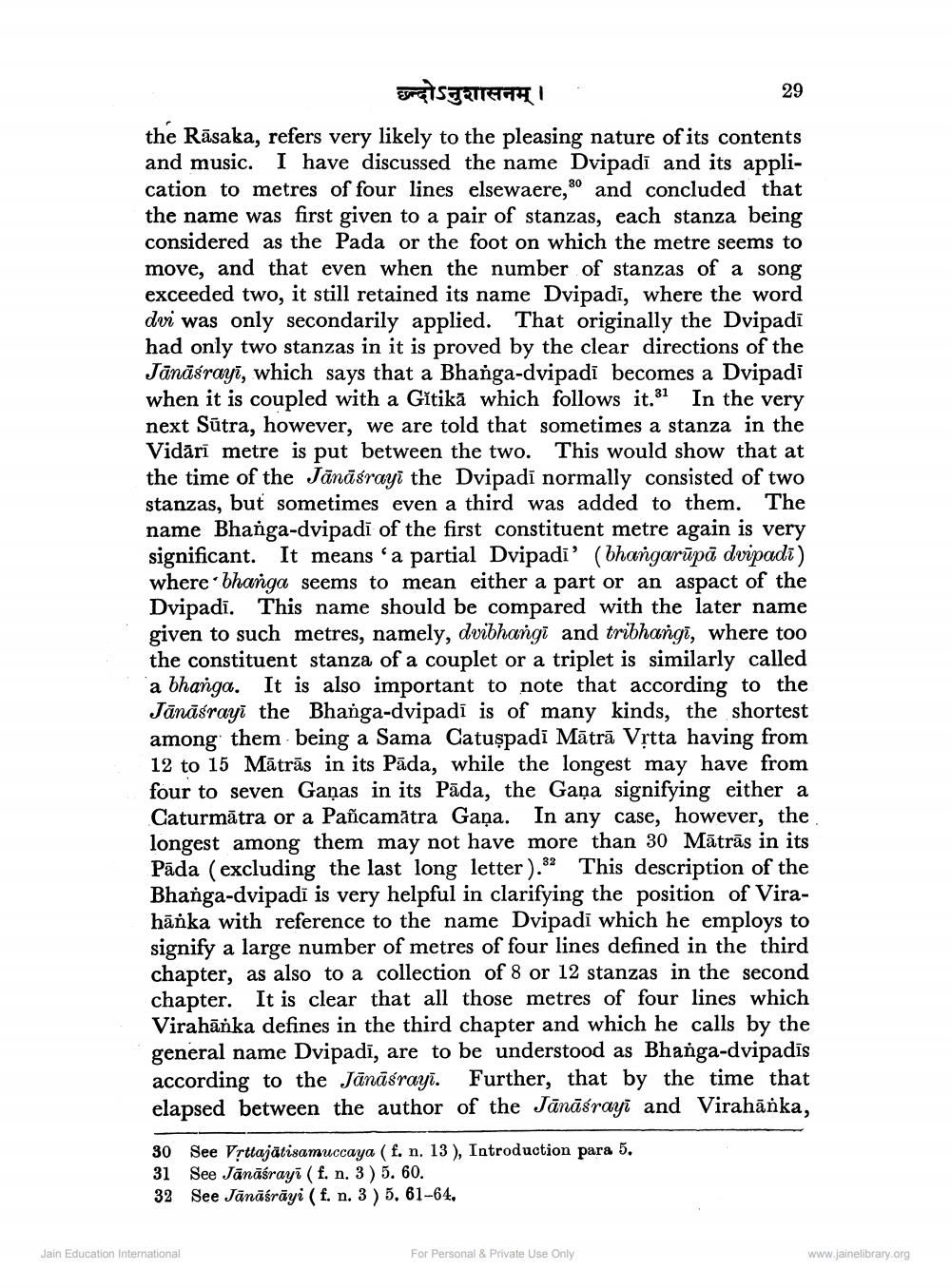________________
छन्दोऽनुशासनम् ।
the Rāsaka, refers very likely to the pleasing nature of its contents and music. I have discussed the name Dvipadi and its application to metres of four lines elsewaere,30 and concluded that the name was first given to a pair of stanzas, each stanza being considered as the Pada or the foot on which the metre seems to move, and that even when the number of stanzas of a song exceeded two, it still retained its name Dvipadi, where the word dvi was only secondarily applied. That originally the Dvipadi had only two stanzas in it is proved by the clear directions of the Jānāśrayi, which says that a Bhanga-dvipadi becomes a Dvipadi when it is coupled with a Gĭtikă which follows it.31 In the very next Sutra, however, we are told that sometimes a stanza in the Vidārī metre is put between the two. This would show that at the time of the Jānāśrayî the Dvipadi normally consisted of two stanzas, but sometimes even a third was added to them. The name Bhanga-dvipadi of the first constituent metre again is very significant. It means 'a partial Dvipadi' (bhangarupā dvipadi) where bhanga seems to mean either a part or an aspact of the Dvipadi. This name should be compared with the later name given to such metres, namely, dvibhangi and tribhangi, where too the constituent stanza of a couplet or a triplet is similarly called a bhanga. It is also important to note that according to the Janasrayi the Bhanga-dvipadi is of many kinds, the shortest among them being a Sama Catuṣpadi Mātrā Vṛtta having from 12 to 15 Mātrās in its Pāda, while the longest may have from four to seven Gaņas in its Pāda, the Gaṇa signifying either a Caturmatra or a Pañcamātra Gana. In any case, however, the longest among them may not have more than 30 Mātrās in its Pada (excluding the last long letter). This description of the Bhanga-dvipadi is very helpful in clarifying the position of Virahanka with reference to the name Dvipadi which he employs to signify a large number of metres of four lines defined in the third chapter, as also to a collection of 8 or 12 stanzas in the second chapter. It is clear that all those metres of four lines which Virahanka defines in the third chapter and which he calls by the general name Dvipadi, are to be understood as Bhanga-dvipadis according to the Jānāśrayi. Further, that by the time that elapsed between the author of the Janasrayi and Virahanka,
30 See Vṛttajatisamuccaya ( f. n. 13), Introduction para 5.
31
See Jänäśrayi (f. n. 3) 5. 60.
32 See Jänäśrayi (f. n. 3) 5, 61-64.
Jain Education International
For Personal & Private Use Only
29
www.jainelibrary.org




